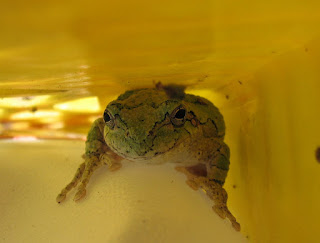Leave the Leaves
SABINA
ERNST of Jericho, Vermont
Photos by Bernie and Sabina
Here's a case where less can be more! Please
consider the following from the National Wildlife Federation:
Fall has arrived—which means leaves are changing
color and beginning to fall to the ground. Did you know that leaving the leaves
in your yard or garden not only saves you time and energy but also benefits
wildlife?
Here are a few good reasons to put down the
rake:
*Provide habitat for wildlife: frogs, turtles, and salamanders rely on fallen leaves to provide cover and hibernation places; many moth and butterfly caterpillars overwinter in fallen leaves before emerging in spring
*Provide food for wildlife: creatures like earthworms and millipedes reside in and decompose leaf litter, and also are themselves a source of food for bigger wildlife like birds and toads.
*Increase fertility of your soil: as the leaves decompose, nutrients are added to your soil, and also allows for greater water retention
Read more:
- Leave the leaves. Leaves are not Litter. Xerces Society
- For the Greenest Yard, Leave the Leaves Behind. Consumer Reports.
- Why You Should Leave the Leaves. National Wildlife Federation
- Leave the Leaves. (for the birds) Bird Note
| Photo by Sanina at Jericho Green Pollination Garden |














